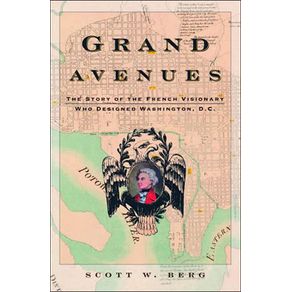To all those who have encountered the delights of driving in the District of Columbia—and subsequently suffered the distress of getting lost amid its oddly angled avenues—Berg (a teacher of nonfiction writing and literature at George Mason University) offers a welcome narrative of the man responsible: Pierre Charles L'Enfant. A French volunteer during the American Revolution, L'Enfant was asked by George Washington in 1791 to design a gleaming federal city, not on a hill but in a swamp. Suffering from constant interference, not least by Thomas Jefferson, and a nasty episode of credit-stealing by a rival surveyor, L'Enfant—something of an easily inflamed control-freak himself—persisted for 11 months before being dismissed. Still, his plan lived on, a monument to Enlightenment architectural principles and plotted with geometric regularity. Washington, D.C., as conceived by L'Enfant, would be the republican antithesis to the medieval, dirty warren of Paris; it would be a polis where the people's Congress would form the city's nexus—and what would become the White House was pointedly set off to the side. Berg performs sterling service in excavating this little-known story from the archives. Every tourist to the nation's capital, and every driver within it, will enjoy the ride. B&w illus., maps.



